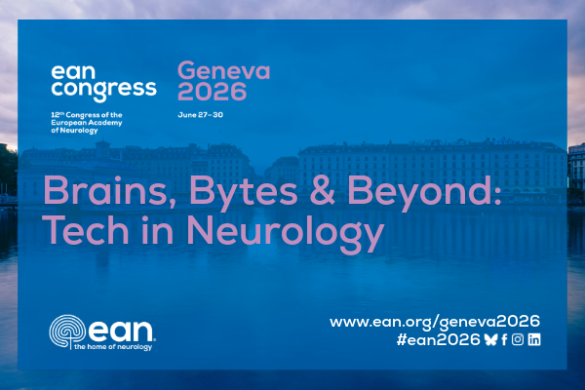
by Elena Moro
For April 2018, we have selected: Whelan CD, Altmann A, Botia JA, et al., for the ENIGMA-Epilepsy Working Group. Structural brain abnormalities in the common epilepsies assessed in a worldwide ENIGMA study. Brain 2018;141:391-408.
Epilepsy affects 0.6-1.5% of the population worldwide with one-third of patients being resistant to antiepileptic treatment. Nowadays epilepsy is considered a network disorder in which several structural changes are involved. Common epilepsies may share structural abnormalities but also have some specific structural deficits. However, consistency and causes of these abnormalities are largely unknown. The Enhancing Neuro Imaging Genetics through Meta-Analysis (ENIGMA) Consortium is an initiative aimed at combining brain MRIs and genomic data coming from hundreds of research centers around the globe. Genetic variants associated with changes in brain structures have been described in several psychiatric and neurological diseases. The Epilepsy Working Group of ENIGMAS (ENIGMA-Epilepsy) has been constituted to implement large studies of imaging and genetic data in epilepsy.
In this ENIGMA study, the authors conducted the largest analysis of structural brain abnormalities in epilepsy to date, using data coming from 2,149 patients with epilepsy and from 1,727 controls (involving 24 research centers from 14 countries). The effect size was rated for 16 subcortical and 68 cortical brain regions, using consistent image processing, quality control, and meta-analysis. As first step, all epilepsies were put together to detect common structural deficits. Subsequently, a well-characterized form of epilepsy, the mesial temporal lobe epilepsy (MTLE with hippocampal sclerosis), was assessed considering patients with right (MTLE-R) or left (MTLE-L) hippocampal sclerosis as two independent groups. Third, all idiopathic generalized epilepsies (IGE) were investigated, and finally, all remaining epilepsies were studied as a combined subgroup. Effects of age at time at imaging, age at epilepsy onset, and epilepsy duration were also analyzed as independent factors. Structural T1-weighted MRI brain scans were collected for volumetric measures extraction of 12 subcortical grey matter regions, and for cortical thickness measures of 34 left- and 34-right-hemispheric grey matter regions. Analysts were blind to subjects’ diagnoses. All research center used multiple linear regression analyses to test for case-versus-control differences, and clinical variables impact. Moreover, the authors conducted four independent regressions across 84 regions of interest to correct for 336 comparisons.
The mean age of epilepsy patients was 34.4 (range 26.2-40) years, and 33.3 (range 25.2-42.3) years for controls. The mean age at epilepsy onset and the epilepsy duration were 17.6 (range 12.1-28.2) and 17.4 (range 8.3-28) years, respectively. Concerning volumetric findings, the whole epileptic group showed lower volumes in the both thalami, hippocampi, and right pallidum compared to controls. Contrariwise, both lateral ventricles were enlarged compared to controls. The MTLE-L subgroup (415) presented with lower volumes in the left hippocampus, both thalami, left putamen, and right pallidum, together with larger lateral ventricles. The MTLE-R group (339) showed lower volumes only in the right hemisphere (hippocampus, thalamus, pallidum), and increased volumes of both lateral ventricles. The IGE subgroup (367) showed lower volumes in the right thalamus compared to controls. The all-other-epilepsy group (1,028) presented with lower volumes in the right thalamus and right pallidum together with enlargement of both amygdala and lateral ventricles.
Regarding thickness findings, the all-epilepsy group exhibited reduced thickness of cortical grey matter in seven regions bilaterally (precentral gyri, caudal middle frontal gyri, paracentral gyri, pars triangularis, superior frontal gyri, right transverse temporal and supramarginal gyri), and unilateral thinner right cuneus, right pars opercularis, right precuneus, and left entorhinal gyrus. The MTLE patients showed different patterns of cortical thickness reduction. The MTLE-R showed lower cortical thickness in both paracentral and precentral gyri, in the left tranverse temporal gyrus and right pars opercularis. The MTLE-L showed more extensive thinner cortex: in both paracentral and precentral gyri, precunei, superior frontal and caudal middle frontal gyri, right pars triangularis, left temporopolar cortex, left parahippocampal, entorhinal and fusiform gyri. IGE showed reduced thickness in bot precetral gyri. The all-other epilepsies group presented with lower thickness in both precentral and paracentral gyri, caudal middle frontal and superior parietal gyri, and precunei.
Duration of epilepsy and age at onset were negatively associated with volume measures and cortical thickness in several regions in the all-epilepsy group, the MTLE-R, and the all-other-epilepsies group.
“This large study further supports the presence of quantitative imaging signatures in epilepsy. Whereas some of these specific structural abnormalities are similar between different types of epilepsy (together with some genetic pathways), some others are specific of selected epileptic syndromes”, says Prof. Paul Bloom, Department of Neurology, Institue of Neuroscience, Ghent University, Belgium. “The precentral gyri and the right thalamus showed shared structural abnormalities, reinforcing the concept that a wide range of common epilepsies shares weakness in the thalamocortical structural pathway. However, the finding of lateralized volume changes in the IGE group is intriguing and should be further explored.”
“Interestingly, MTLE patients showed widespread abnormalities beyond the mesial temporal regions, supporting the notion of a network disease also for this specific disease.’ says Prof. Hannah Cock, St. George’s, London, UK. “Although this study has several limitations (only cross-sectional data, no information about environment, medication, type of seizures, disease severity, etcetera), nevertheless it expands previous limited studies and raises several issues to explore further in understanding the relationship between pathophysiology, genetics, functional and connectivity mapping in epilepsy.’
The other nominees for the April 2018 Paper of the month are:
- Nakamura A, Kaneko N, Villemagne VL, et al. High performance plasma amyloid-β biomarkers for Alzheimer’s disease. Nature 2018;554:249-254. In this paper the authors evaluated the measurement of high-performance plasma amyloid-β biomarkers by immunoprecipitation coupled with mass spectrometry as biomarker of Alzheimer disease. This blood-based amyloid-β markers were correlated with amyloid-β-PET burden and levels of Aβ1–42 in cerebrospinal fluid. These results support the clinical utility of plasma biomarkers in predicting brain amyloid-β burden at an individual level.
- Lhommee E, Wojtecki L, Czernecki V, et al., in collaboration with the EARLYSTIM study group. Behavioural outcomes of subthalamic stimulation and medical therapy versus medical therapy alone for Parkinson’s disease with early motor complication (EARLYSTIM trial): secondary analysis of an open-label randomized trial. Lancet Neurol 2018;17:223-231. This study reports on behavioural secondary outcomes of the EARLYSTIM study at 2-year follow-up. Compared to patients with medical treatment only, patients with subthalamic nucleus stimulation presented with significantly less neuropsychiatric fluctuations and hyperdopaminergic behavior. There were no differences concerning hypodopaminergic behaviour between groups.











